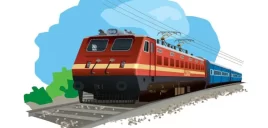
The Indian Railways has witnessed a significant number of equipment failures between April 2018 and January 2019, according to internal government data, raising questions over the national transporter’s safety strategy.
The incidents fall into a number of different categories: ‘rail fracture’, ‘train parting’, signal and weld failure among others.
There were also 2,313 cases of over head electric (OHE) failure and 97,520 cases of signal failure reported up to January 2019, according to railways data accessed by The Wire.
The data revealed that ‘coach detachment’ was recorded 1,302 times. Wagon detachment was recorded in 2,059 incidents while cases of ‘train parting’ were reported 643 times across the country, causing localised disruptions in railway operations.
In January alone, 60 cases of train parting and 201 cases of wagon detachment were reported.
Train parting, coach and wagon detachment are all caused by what is called a ‘coupling break’, a serious safety concern for railways.
There were 3,001 rail fractures and 1,633 weld failures reported up to January 2019, a total of 4,634 incidents. In comparison, in FY’18, there were 4,369 record instances of rail and weld fracture. In FY’17, 3,546 such incidents were reported.
From April 2018 to January 2019 (nine months), there were also 468 cases of ‘hot axle’ incidents that were reported. When the bearing becomes hot, it causes the axles to overheat, leading to an accident. In comparison, in the previous two years, there were 521 (FY’17) and 453 (FY’18) hot axle issues.
On the diesel and electric front, there were 11,460 cases of electric locomotive failure and 9,054 cases of diesel locomotive failure up to January 2019.
The Central Railway reported the maximum number of electric loco incidents (2,304) while North Western Railway had the maximum diesel engine failures (1,367). In January alone, 21 cases of auxiliary transformer failure and ten cases of grid failure were reported.
There were five fire incidents, 43 derailment cases, six accidents at level crossings – three each at unmanned and manned level crossings – in the current fiscal.
In order to prevent accidents, the national transporter has undertaken a series of steps including signal upgradation and elimination of unmanned level crossings across the country, said a senior railway ministry official.
Besides this, track renewal is being carried out in almost all sections to prevent rail and weld fractures, the official added. However, repeated equipment failures have caused a serious setback in the railways’ safety drive.
Under previous railway minister Suresh Prabhu, the ministry kicked off ‘Kaya Kalp’ an exercise aimed at suggesting “improvements and innovation”. It primarily involved a committee headed by Ratan Tata – media reports from 2015 noted that the panel would “develop an action plan to reduce recurring train mishaps”.
However, when incumbent minister Piyush Goyal took charge at Rail Bhawan, the Kaya Kalp initiative was sidelined even though the committee had come out with some proposals and held six meetings that were presided over by Tata and attended by senior railway officials.
Source – News Wire
Disclaimer: The Information /News /Video provided in this Platform has been collected from different sources. We Believe that “Knowledge Is Power” and our aim is to create general awareness among people and make them powerful through easily accessible Information. NOTE: We do not take any responsibility of authenticity of Information/News/Videos.
This entry was posted in 1 Rail News, General












